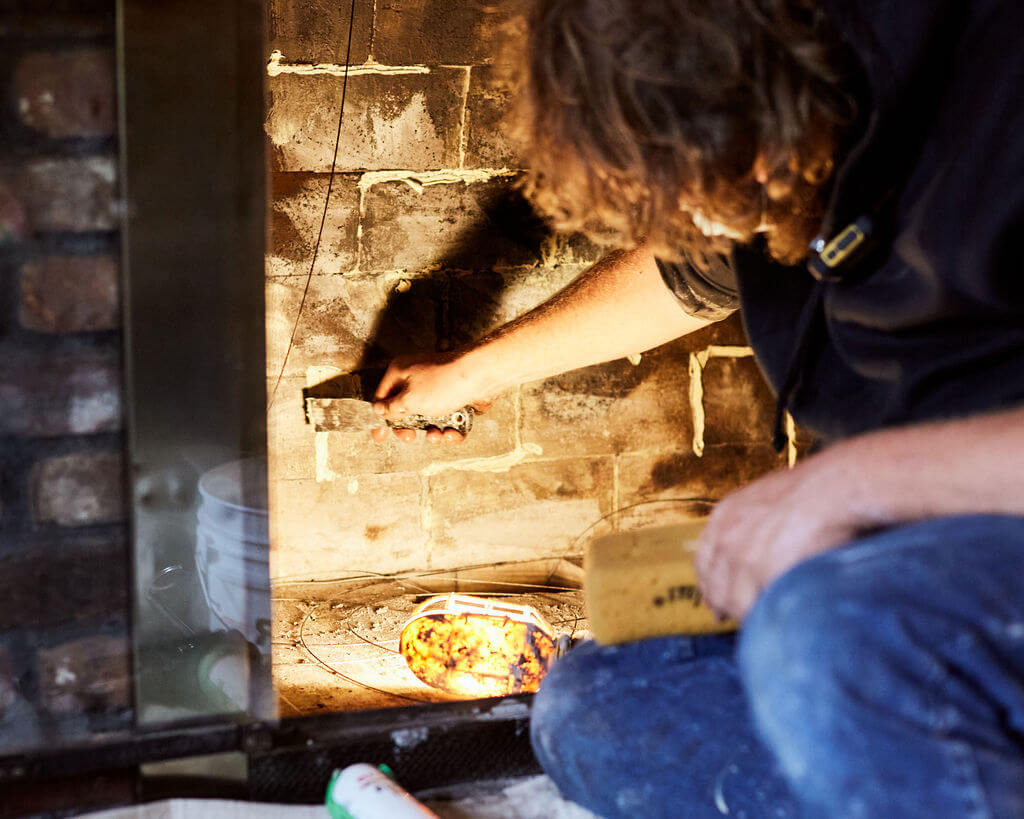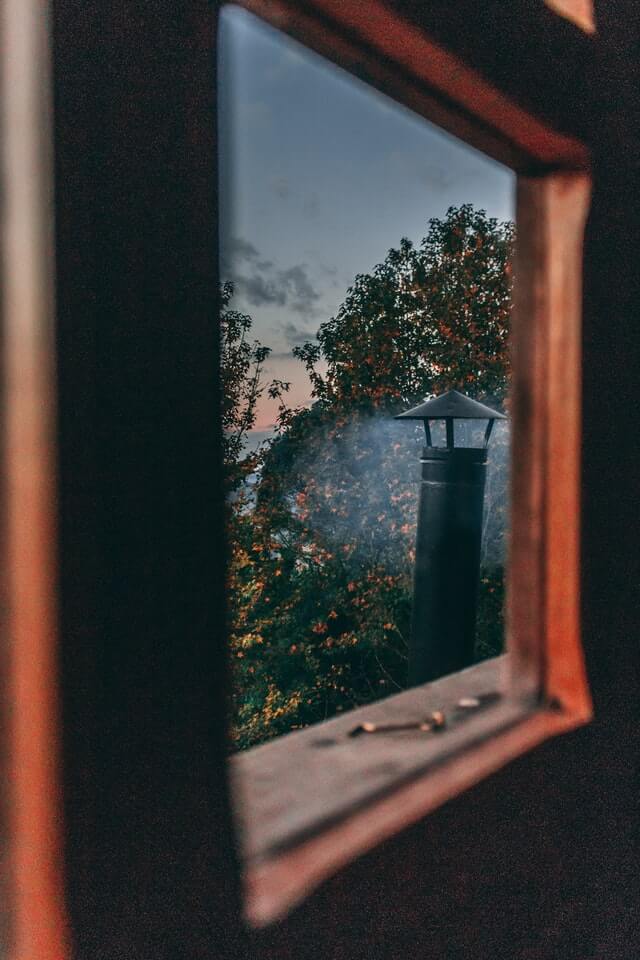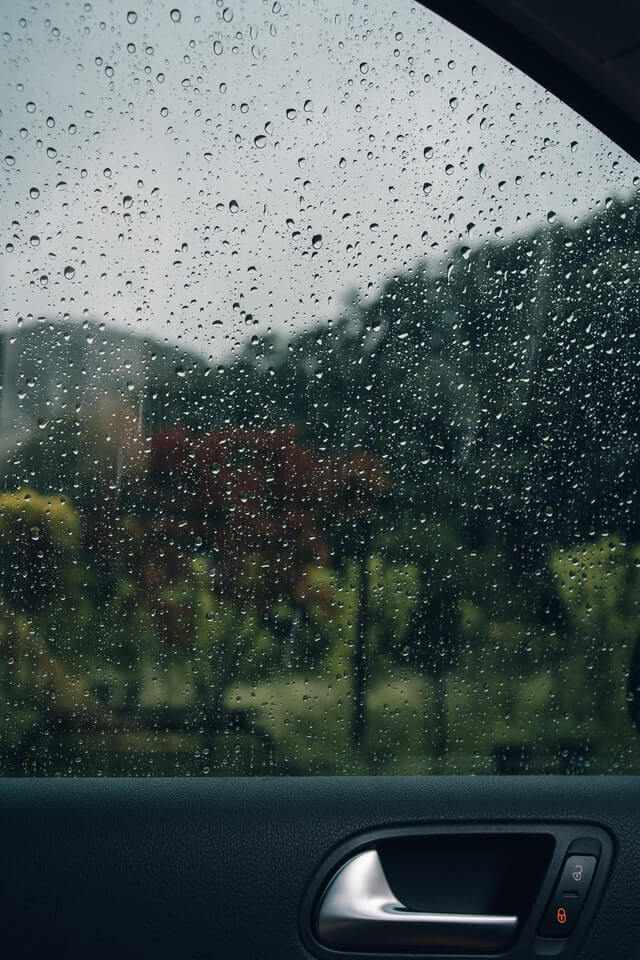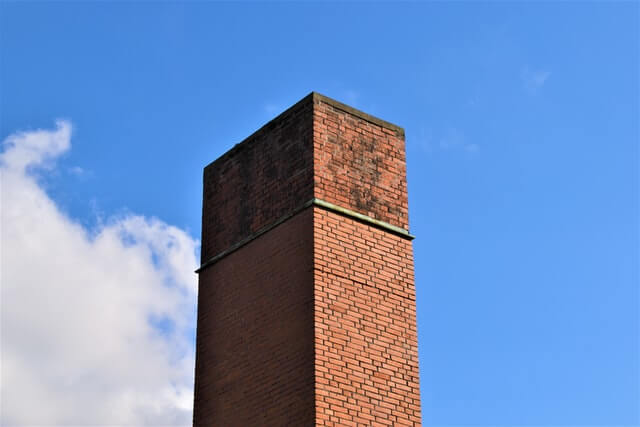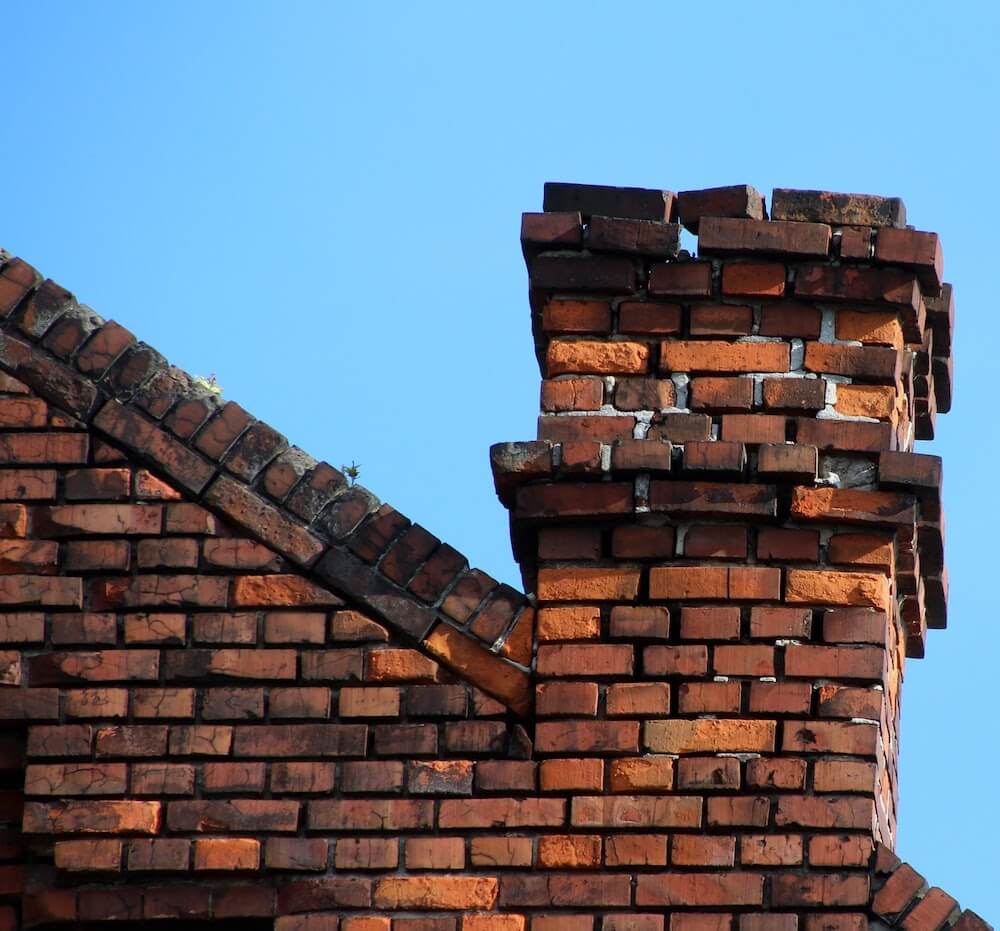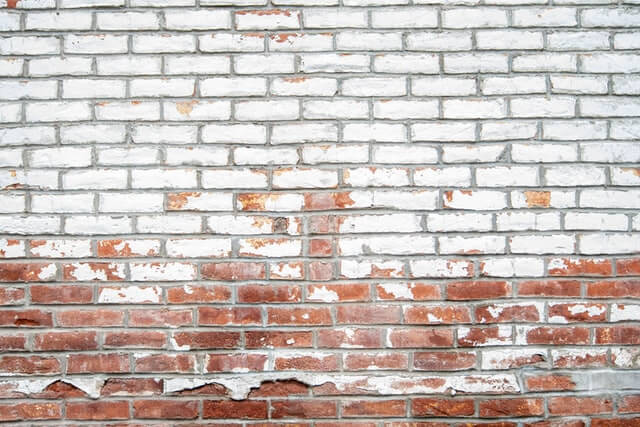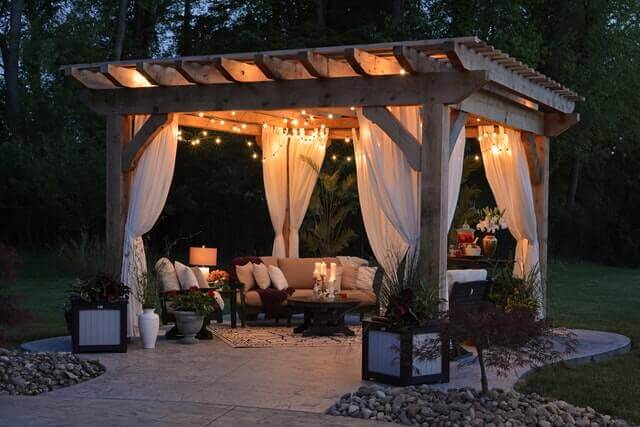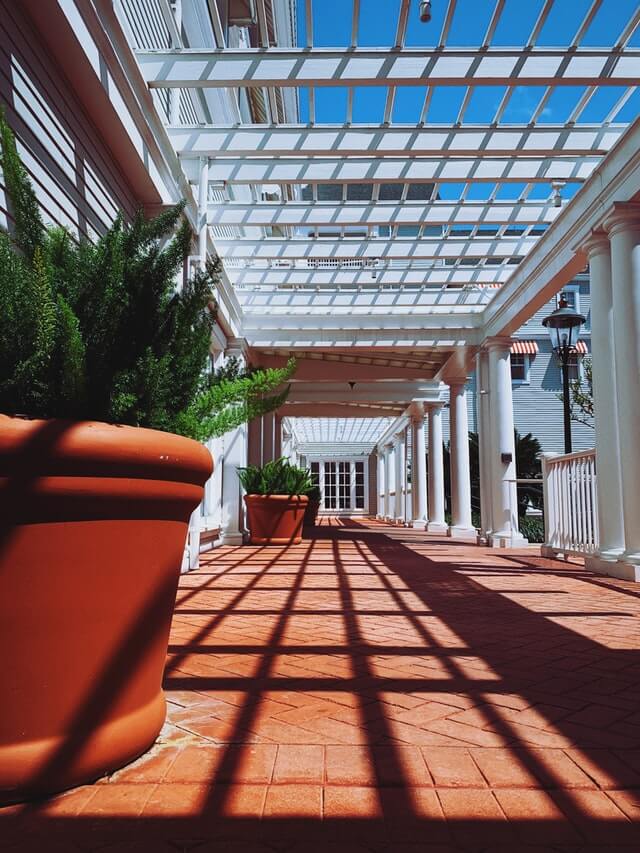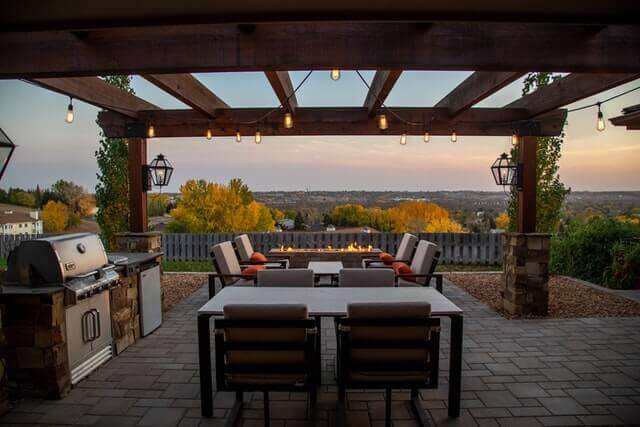The Best Indianapolis Chimney Sweeps
The best Indianapolis chimney sweeps. The safest fireplaces and chimneys are those that receive regular cleaning, repair, and maintenance by certified chimney sweep technicians. Neglecting regular chimney maintenance will lead to dangerous creosote and soot buildup as well as smoke-drafting obstructions, a common problem if you use your chimney without a chimney cap. All of this can lead to dangerous operating conditions.
The chimney uses the pressure difference caused by a hot column of gas to create a draught and draw air over the hot coals or wood enabling continued combustion. During normal operation, a layer of soot, and creosote builds up on the inside of the chimney, restricting the flow. The creosote can also catch fire. A chimney sweep is someone who clears ash and soot from the chimney's flue by sweeping and removing the soot from within.
Here are the reasons why hiring a qualified professional chimney sweep is so important:
Remove Creosote
When the smoke from a fire cools and condenses in a cold chimney, it creates a condensation that becomes creosote on the inner flue walls or liner. Creosote is sticky, similar to tar, and not only does it stick to the chimney, but other debris can also stick to it as well.
It doesn’t take a lot of creosote to fuel a chimney fire. The scary part about a chimney fire is that it’s not always noticed by people in the home. Often, smaller chimney fires can start and then go out on their own. Still, the damage is being done to the masonry or liner within the flue when this happens. Eventually, without proper cleaning, a larger fire that could put the entire home and lives at risk is bound to happen.
Signs of a chimney fire include a rumbling or ticking sound in the firebox. Excess smoke drifting down into the room is another sign. If you notice any of these, extinguish the fire and call 911.
Clean Out Obstructions
If you operate your chimney with a damaged or missing chimney cap, obstructions can enter the flue. These obstructions can include twigs, leaves, small broken branches as well as animal nests, and small dead animals. All of this can create drafting issues and a fire danger.
Chimneys are constructed with the proper flue size to allow smoke from your fireplace to rise and exit the top of your chimney. Where there’s a narrowing of the flue opening, smoke and toxins can back up and exit the firebox into the room.
You can keep all debris out of your flue by having a quality chimney cap installed. Chimney caps cover the flue opening to prevent water intrusion (and subsequent water damage), and the sides are made of a material that allows smoke to move through them while keeping outside junk outside where it belongs.
Smoke
Although smoke entering the home is a major concern, it contains carbon monoxide, which is a much bigger problem. This toxic gas is invisible and odorless and is known to be deadly to humans and animals. Professional, certified chimney sweeps remove all obstructions from your chimney, restoring it to full operational capacity.
Where creosote is concerned, the less smoke your fireplace produces, the less creosote buildup you’ll have to deal with. Here’s how to create less smoke:
- Burn only dry wood
- Don’t stack logs tightly together – they need space to gather oxygen
- Ensure sufficient air within the home is getting to the fireplace (crack a window, if necessary)
- Keep your flue clean so smoke can travel up it smoothly
- Make sure your flue opening isn’t too small for the fireplace
- Make sure your chimney is tall enough (minimum 10 feet high and extending at least two feet from the roof)
By letting a certified chimney sweep do its part in maintaining your chimney, you can rest easy, knowing your chimney is clean, safe, and working at peak performance.
Cost
Regular maintenance on your chimney during the summer months can help you avoid costly repairs to damaged chimneys, roofs, or fireplaces in the winter. Neglecting to have your chimney swept and inspected can lead to buildup that can start fires in your chimney, on your roof, and in your home. Smoke being pushed back into your home from a chimney with too much soot can cause irreversible damage to your furniture, walls, carpet, and clothes.
Peace of Mind
A chimney in good working condition does its job safely and efficiently. A chimney packed with flammable creosote can be the source of a catastrophic house fire.
Hiring a professional to sweep your chimney will give you great peace of mind in knowing that it is done right, functioning at its best, and ready for use. Also, you’ll know that your family is safe in your home with a nice fire going.
Chimney professionals can identify problems that most homeowners would miss. If a chimney becomes obstructed, not only can it lead to a fire, but it can cause deadly carbon monoxide to enter the home instead of escaping out of the chimney. Without the proper training and equipment, sweeping the chimney and checking for chimney obstructions by climbing the roof can be very dangerous. Make sure to have someone who is licensed and trained inspect your chimney. Inspections are vital in determining what service you need to have done to your chimney.
Brick + Ember Outfitters Indianapolis’ Best Chimney Sweeps
At Brick + Ember Outfitters Indianapolis, we can ensure that all of our technicians are certified and trained to not only provide the most skilled work but the best customer service as well. Each of our technicians is certified by the Chimney Safety Institute of America, or CSIA, and has worked on the many unique types of chimneys and fireplaces.
We take professionalism to the next level here at Brick + Ember Outfitters by assuring our customer’s safety and trust. Our technicians will come to your home in a Brick + Ember Outfitters branded car and have identification on them every time so there's no guesswork as to who’s entering your home.
Request an appointment with one of our CSIA certified technicians today!
3 Reasons Why Chimney Chase Covers Are So Important
What is a Chimney Chase Cover?
A chase cover (sometimes called a chase pan, top flashing, or top pan) is a square or rectangular piece of metal that is fitted to sit securely on top of your chimney chase, helping to keep water and other environmental elements out. The chase cover is exposed to the sun, wind, and other damaging elements year-round.
Why is a Chimney Chase Cover so Important?
- Safety
Understanding the different components of your chimney can help you maintain it for future use while keeping your family safe. A chimney is, after all, a hole in the roof of your house that helps control fire, and smoke. Both elements can be damaging to your home, safety, and health if not taken care of properly. Below are the main components of a chimney:
- Bricks
The bricks compose the foundation of your chimney. If left unmaintained or damaged, your safety and the structural integrity of your chimney are at risk. Damaged bricks can lead to structural damage to your chimney and home, as well as moisture and water damage that can lead to dangerous mold and mildew.
- Chimney Flue
The flue is a vertical shoot that allows combustion materials to exit your home. Homeowners are required by law to line the flue.
- Chimney Liner
Usually composed of ceramic tiles, the Chimney liner lines the flue to prevent fire and smoke damage to the chimney and the house. Liners must be free of cracks or splits. Use of the chimney should be prohibited if there are any cracks present in the liner.
- Chimney Cap
Helping to prevent roof fires, the mesh used in a chimney cap helps to contain sparks from the fireplace. In addition to preventing sparks from escaping, the chimney cap helps keep outdoor elements like rain, snow, debris, animals, and insects from entering your home.
- Chimney Chase Cover
Used to cover the opening of the chimney, and most commonly made out of copper or stainless steel, chimney chase covers can be made available in several material options, including:
- Copper
- Aluminum
- Stainless and Galvanized Steel
- Chimney Flashing
Located where the chimney meets the roof, a chimney flashing’s purpose is to protect the roof of the house along with the rooms below it from fire and water damage. Chimney flashing is often made out of vinyl, aluminum, copper, or steel to seal the area when the chimney goes into the roof.
- Chimney Crown
The slab of concrete at the top of the chimney. The chimney crown, also known as the chimney wash prevents water from entering the chimney.
- Fireplace Damper
Also known as the throat damper, this chimney component is located at the throat of the chimney, above the firebox. The damper can be closed when the fireplace is not in use, so that heated or cooled air won’t escape the house.
- Smoke Chamber
Located between the flue and the damper, the smoke chamber compresses combustion byproducts so they can exit through the chimney rather than reentering your home.
- Cost
The chase cover helps protect both the exterior and interior components of the chimney. When damage occurs to the external part of your chimney, like a domino effect, there is almost always damage to the interior of your flue system, fireplace, and even your home.
Damage to the chase cover is often caused by water buildup and rust. Water damage is usually caused by flat or improperly installed chase covers. This sort of water damage can be prevented by cross-breaks or a dome effect, allowing water and debris to flow AWAY from the chimney.
By the time most people notice the inadequacies in their chase covers, the costly damage to the chimney, roof, or fireplace is already done. This is why it is so important to have annual inspections and maintenance by a knowledgeable CSIA Certified Chimney Sweep who can provide you with the proper service and suitable parts for your system.
- Comfort
Neglecting to maintain your chimney chase cover will eventually lead to chimney flute, roof, fireplace, and home damage. Backdrafts in your chimney due to damage and neglect can snuff out your fire and force smoke back into the home, making regulating temperatures in your house difficult. Every chimney is unique, so a thorough inspection before a repair is highly recommended.
Let Brick + Ember Outfitters Indy’s licensed professionals help you stay warm and safe year-round by scheduling an appointment for a chimney inspection and customized today. Contact us to get started!
How to Prevent a Chimney Leak
How to prevent a chimney leak. Although they don’t tend to be the most used portions of a house, chimneys can cause a lot of problems. They are typically located above the roof line, which means that they are one of the first to take damage during a destructive event.
Between rain, storms, or condensation, moisture traps itself into the brick and mortar of a chimney. Many homeowners don’t think twice about this, and for understandable reasons. Since they are so cut off from the rest of the building, damage festering within the chimney goes unnoticed until it is too late for prevention.
Left unchecked, chimney damage can cause fires, moisture, or even carbon monoxide poisoning. They are often the cause of many unsolved problems, so if you’ve been experiencing some of these issues yourself, it could be your chimney.
It is important to try and prevent these situations from happening, so here are some ways that you can stop your chimney from leaking.
Get a Chimney Cover
One of the first and easiest things that you can do to prevent a chimney leak is invest in a chimney cover. If birds, pests, or rain have been getting into your house, it is most likely because you don’t have anything protecting the top of your house.
Chimney covers avoid too much rain getting in, especially since it tends to bring in debris along with unwanted moisture. Above all, keeping chimneys free from any blockage prevents Carbon Monoxide poisoning, a deadly and devastating health hazard.
Have a professional come out and place a chimney cover over the flue. If you already have one, check to make sure that it hasn’t sustained any damage. If your current chimney cover is damaged or needs to be updated, change it immediately.
Waterproof Your Chimney
Since they take the brunt of most water related events, it may be time to think about waterproofing your chimney. It is an easy and efficient way to prevent leaks, moisture, or water damage, especially when it may be happening under your nose.
Keep your chimney intact by taking the initiative to waterproof your chimney. If you would like to try and waterproof the chimney yourself, make sure that you prepare yourself by wearing protective clothing and researching every step of the process. However, while it is one of the few chimney projects that you can do on your own, it is highly recommended that you hire a professional service.
Keep an Eye on Your Chimney Crown
The Chimney crown is the cement portion at the top of the chimney. The purpose of the crown is to keep rain and snow out of the flue. However, because it is often made out of brick, it is common for cracks to form around the tiles. Masonry is known to be very durable, but due to the natural passing of time, the cement begins to deteriorate.
When this happens, moisture gets trapped inside the chimney. If water keeps getting into your home unexpectedly, it is likely because you have a damaged chimney crown. This happens when the crown gets cracked, causing rain to pour right through the masonry and allowing moisture to get trapped in the flue.
When this happens, masonry repair is required. If the damage isn’t severe, a simple coating treatment will be enough to fill in the cracks. However, if there is significant damage to the crown of the chimney, masonry professionals will need to remove the old cement and replace it with new brick.
Check Your Flashing
Have you ever noticed that there is a gap between the mortar, your roof, and the chimney? This is an aluminum piece known as the flashing, which is there to prevent water from entering the brick.
However, if this isn’t sealed or it has been damaged in some way, leaks can trickle into your chimney. Since it is often built out of waterproof material, it only lasts for temporary periods of time before periodic check ups may be necessary.
If you don’t have flashing already, hire a professional to install it into your chimney. If you know you already have it and have experienced regular chimney problems despite routine sweeps, then your flashing may be the culprit.
Watch Your Wallpaper
Have you noticed subtle changes in your wallpaper? Has it started to crack and fold, particularly in areas where you know a chimney is nearby? Peeling wallpaper can be one of the first signs that your chimney is leaking, but it can also help you prevent it from getting worse.
If you notice changes in your wallpaper, you may just need a chimney liner. However, if you’re worried about the severity of your chimney’s damage, check in with a professional so that they can survey the problem.
Solve Your Chimney Problems With B+E!
At B+E, we value the safety of your home. A chimney leak is our specialty, and we want to properly help you solve any problems you may be experiencing. Whether it be chimney leaks, routine sweeps, or restoration, we are here to help!
We welcome any questions you have about chimney services. If you would like to request an evaluation, please contact us today.
Masonry Repair vs. Restoration
Masonry repair vs. restoration. If you’ve taken a closer look at an old building or even your own living space, there is a good chance that you have observed the work of masonry. Masonry is the method of constructing buildings with bricks and mortar. This is done by a cement mortar that welds bricks and stones together, creating the beautiful buildings you often see in older city neighborhoods.
However, as time goes on, construction continues to evolve, and the art of masonry has become a method of the past. However, that does not mean that it is no longer used. On the contrary, it can be even more essential as the passage of time takes a toll on old city buildings.
Although masonry is known to be very durable, it is natural to find cracks, holes, or disrepair in older brickwork. If you have a chimney in your home, it may be time to consider having it repaired.
But what is the difference between masonry repair and restoration? How do you know if you need to hire a masonry service? Here are a few things to think about if your building, chimney, or historical landmark is in need of improvement.
Masonry Repair
Masonry repairs refers to the process of patching cracks in the mortar. This can also mean plugging gaps that have appeared over time. Some other forms of repair include replacement of old mortar that may be starting to crumble. Masonry repair also applies to patching and fixing old stone. This can mean repairing impaired stones or completely replacing the stone with new ones.
You may be in need of masonry repair if you have experienced these issues in your home:
- Cracked or chipped bricks
- Crumbling mortar
- Brick Discoloration
Masonry Restoration
Masonry restoration focuses on the building as a whole, making it a much larger project. Sometimes, especially in particularly old buildings, there is simply no way that repairs can be made without fixing the entire problem.
This is necessary to improve the building’s design and to avoid it from collapsing. This is particularly important when restoring historical buildings that have been an integral part of the community for years.
The process of masonry restoration begins with removing the old brick and mortar and replacing it with completely new materials. It is natural to see mortar disintegrating over time, especially when it has to do with extremely old buildings. It is for this reason that restoration is important for buildings of important historical value.
What’s the Difference?
Simply put, if you have been comfortably living in a brick household for a long time, you probably only need to have your masonry repaired. Restoration only needs to happen if the entire structure is unsound, which rarely applies to dwellings where people are presently residing. Restorations need to happen if the building has been abandoned for some time or if it is planning to be used for historical significance.
Restorations are much larger projects, take more time, and proceed with the purpose of restoring the building back to its original appearance. Repairments make small adjustments to the mortar to prevent any further damage, take significantly less time, and are very common.
A diligent property owner will make annual repairs to the brick if they know the building was made out of masonry. It is very rare for someone to own a building long enough for it to need restoration, and repairs are usually made regularly to prevent that from happening.
When to Seek Out Professional Help
If you are noticing chips, holes, or cracks in your building’s brick, it is time to get repairs done. This also applies to chimneys or sidewalks on your property. If these are done on a regular basis, there will be no need for an entire restoration project.
If there is a historically significant building in your community or you are thinking of investing in an older building, restoration will be required. Left unattended, decaying brick and mortar could make the building structurally unsafe. It is important to restore the building immediately if it is being planned for further use.
Why Should You Choose Brick + Ember Outfitters for Masonry Services?
Brick + Ember Outfitters of Indianapolis are here to help you with your brick and mortar needs. Whether it be regular masonry repairments for your chimney or fixing old stone on your house, Brick + Ember Outfitters is here to help.
Our professional team of experienced masonry professionals can assist you with chimney installation, masonry repair, or even restoration. Any questions you may have are greatly encouraged, and we are available through the entire process to make sure that everything is to your satisfaction.
Repairing damaged or aging masonry can be stressful to handle on your own, but it doesn’t have to be. By choosing B+E, you are one step closer to a home that looks and feels like new. To learn more about our masonry services or to schedule an appointment, contact B+E today.
Summer Chimney Sweep: Chimney Maintenance
Summer chimney sweep: chimney maintenance. The last thing on your mind during the sweltering summer months is probably your fireplace, but this warmer climate lends itself to the perfect time to sweep your chimney. During the winter, while you use your fireplace or wood-burning stove to keep warm, creosote and soot are building up inside your chimney. Once the weather warms, and you are no longer using your fireplace, birds and other small animals find chimneys to be the perfect place to make a home. The combination of soot buildup and potential debris from weather or animals inside your chimney flue is the perfect combination for a fire.
Prepare your chimney for the burning season with a summer chimney sweep. There are several key benefits to get your yearly chimney sweep in summer, and Brick + Ember Outfitters is here to help!
Chimney Maintenance
The chimney uses the pressure difference caused by a hot column of gas to create a draught and draw air over the hot coals or wood enabling continued combustion. During normal operation, a layer of soot, and creosote builds up on the inside of the chimney, restricting the flow. The creosote can also catch fire. A chimney sweep is someone who clears ash and soot from the chimney's flue by sweeping and removing the soot from within.
Fire!
The only place you want to see a fire in your home is inside the fireplace. Soot and creosote buildup not only restrict airflow to your fireplace, making it more difficult for your fire to burn, but can cause a backdraft pushing smoke into your home, and worse yet, the soot and ash can catch fire. If the soot or creosote does catch fire in the chimney flue, your entire home can burn down.
Don’t Freeze
Chimney sweeps need the chimney to be cold in order to inspect, sweep, or repair it. If you wait until the winter months to call for help, you will need to refrain from building a fire at least 24 hours prior to your chimney inspection. Long, cold nights in the winter won’t be necessary if you plan accordingly and have your chimney swept during the summer.
Cost
Regular maintenance on your chimney during the summer months can help you avoid costly repairs to damaged chimneys, roofs, or fireplaces in the winter. Neglecting to have your chimney swept and inspected can lead to buildup that can start fires in your chimney, on your roof, and in your home. Smoke being pushed back into your home from a chimney with too much soot can cause irreversible damage to your furniture, walls, carpet, and clothes.
Availability
The cold winter months are the busiest time of the year for chimney sweeps and technicians. Waiting until winter to get your chimney swept or repaired can lead to longer wait times and fewer technician availability. Waiting on an appointment can make sweeping your own chimney seem tempting, but this is very messy work and can be dangerous without all of the right equipment. Scheduling regular summer inspections will allow your chimney technician to identify and fix any problems long before the cold winter months hit.
Safety
Chimney professionals can identify problems that most homeowners would miss. If a chimney becomes obstructed, not only can it lead to a fire, but it can cause deadly carbon monoxide to enter the home instead of escaping out of the chimney. Without the proper training and equipment, sweeping the chimney and checking for chimney obstructions by climbing the roof can be very dangerous. Make sure to have someone who is licensed and trained inspect your chimney.
Inspections are vital in determining what service you need to have done to your chimney. There are three types of inspections that can be performed:
- Level one: This inspection is recommended for a chimney that is well maintained, typically with annual sweepings.
- Level two: Recommended for new homeowners, or a home where there has been a recent change or damage to the chimney. This inspection ensures the chimney is working properly and that there is no obvious damage.
- Level three: Recommended for chimneys with visible or obvious damage. This level of inspection requires a skilled technician in order to identify issues that are not obvious or visible. This level of service can be used to identify previous flue-fire and water damage.
Brick + Ember Outfitters Indianapolis
At Brick + Ember Outfitters Indianapolis, we can ensure that all of our technicians are certified and trained to not only provide the most skilled work but the best customer service as well. Each of our technicians is certified by the Chimney Safety Institute of America, or CSIA, and has worked on the many unique types of chimneys and fireplaces.
We take professionalism to the next level here at Brick + Ember Outfitters by assuring our customer’s safety and trust. Our technicians will come to your home in a Brick + Ember Outfitters branded car and have identification on them every time so there's no guesswork as to who’s entering your home.
Request an appointment with one of our CSIA certified technicians today!
What To Expect During a Chimney Inspection
What to expect during a chimney inspection. Since they tend to be the least-used portions of the house, it can be easy to ignore your chimney. However, the amount of junk that can get trapped in the flue may become a danger to your home.
For one thing, chimney fires can be an extreme safety hazard, particularly if you happen to have a wood-burning fireplace. In fact, chimneys are the cause of 42% of house fires. This happens because of residual, dust, pests, or soot that wedges itself into the heart of the sweep.
Wood burning fireplaces increase your chance of a fire because of a material known as creosote. This gets stuck to the side of the flue, resulting in unplanned fires that can reignite when left unchecked. The most dangerous part about these fires is that they tend to spark at the top of the fireplace, letting it go undetected before reaching other portions of the house.
The good news is that fires can be prevented, and a chimney inspection can help you get there. Not only do they keep you and your household safe, but it prevents the need for chimney repair, dust buildup, and carbon monoxide poisoning.
Indianapolis Brick + Ember Outfitters offers these services to you if you are in need of a routine chimney sweep. If you are thinking about getting your chimney examined, here are some things that you should know prior to an inspection.
Different Levels
Overall, a typical inspection would include a quick sweep, an observation of possible damage, and a maintaining of structural integrity. However, there are actually three different types of inspections varying in price, service, and specialty. When your inspector arrives, they will briefly oversee the home and tell you what kind of inspection might be best for you.
Level I
This will allow for easy accessibility to the chimney. No tools will be necessary, and it is a sign that the chimney is well kept. A proper level I chimney inspection will be utilized when there is little to no damage to the structure. This is a normal level for annual inspections that are done on a regular basis.
Level II
This level is more extensive, often including extra equipment on top of a chimney sweep. The inspector will often use a camera to look for any interior damage they may have missed. This type of inspection is done if you have changed something in your home, such as a heating system, or if you feel there is damage following the aftermath of a storm. If you are selling your house, it is required that a minimum level II inspection is done.
Level III
This is the most intense type of inspection. Depending on the severity of the damage, an inspector may need to get into hard-to-reach areas. This would be done by cutting into the masonry, drywall, or stone to crawl into particular parts of the chimney. Because it is so invasive, a proper inspection of this kind would include a consultation with your chimney services. Your inspector would work with you to figure out whether or not a chimney repair project would need to be added on top of the sweep.
Be Prepared With Your Own Observations
No one knows your house better than you, so if you have been noticing issues that may be attributed to your fireplace, let your inspector know. By making your own observations and paying close attention to the state of your chimney, you could prevent damage later on.
Before your inspection, take a quick look at your chimney’s exterior and interior surroundings. Are you noticing any cracks in the masonry? Is the wallpaper around your fireplace peeling? Have you noticed pests in your house? All of these things could have to do with your chimney, so be sure to let your inspectors know about it.
Expect a Chimney Sweep Recommendation
No matter the outcome, a chimney service will likely recommend getting an annual chimney sweep. It only takes a brief observation for the inspector to know whether it has had a recent sweep or not, and they will be able to tell you what you need immediately.
Although it may seem tempting to hold off on it for another year, a basic chimney sweep could possibly save your life. Not only does it prevent fires, but it could greatly reduce the chances of carbon monoxide poisoning occurring in your home, a deadly health hazard.
Don’t wait for something bad to happen before getting a chimney sweep. If an inspector recommends it, take the opportunity to get it done.
Get Your Chimney Inspected With B+E
At Brick + Ember Outfitters Indianapolis, we understand how important your home is to you. If you are feeling that something is wrong with your chimney or you are simply in need of a routine inspection, please don’t hesitate to contact us.
We welcome any questions you have about our services. If you would like to inquire about an inspection or schedule an appointment, please reach out to us at 317-500-1250 or office@brickandember.com.
3 Characteristics of Brick Restoration
3 characteristics of brick restoration. If you have ever observed an older building, you may have noticed intricately welded bricks that make up aged city structures. Depending on the state of the building, you may have also noticed how the passage of time tends to affect the masonry keeping the structure in place.
Brick restoration is a type of masonry service with the intent of restoring a building’s original structural integrity. The process includes a pattern of restoring brick to its original appearance, repairing the coloration, and replacing crumbling bricks.
Brick buildings are known to be incredibly durable, but the natural aging of time can cause damage to mortar structures. Brick restoration services are necessary for retaining the structure’s original beauty, making the building look and feel like new.
Here are three things you need to do about brick restoration and why you should pay attention to the warning signs of mortar damage.
Mortar Repair
Mortar is the cement material that welds brick together. As time goes on, it can deteriorate and create serious problems to the building. This can mean loss of structural integrity, coloration, and dwelling safety.
This is one of the many reasons why brick restoration is so important. One aspect of the service is repairing damaged mortar. This is done through a process called brick repointing, a form of restoration that aims to increase the quality of finish between each brick.
Moisture, nature, and weather can all contribute to brick disrepair, and repointing can help bring back the quality of the mortar. It is the process of removing damaged material and applying liquid to the brick and mortar, thus replacing the original brick.
This is a process that has been mastered by professionals, so it is not recommended as a personal home improvement project. Doing so could cause greater damage to the building, which could create safety problems for the people living within.
Brick Revitalization
As brick ages, so does its original appearance. The natural wear and tear of time can tint the brick’s color, resulting in an unappealing shade that severely taints the structure’s former glory. This is caused by nature, moisture, and contaminants that get absorbed into the stone. Thankfully, brick restoration can help with this.
Sometimes, brick decolorization will appear before any structural problems occur. This is why it is essential to revitalize the brick before any other problems appear in the future. This is done by power washing, vacuuming, and scrubbing the pollution before applying the new masonry stain.
Once the masonry stain is completed, it will make the building look like new. Continue supervising the brick regularly to prevent major repairs. However, it is important to pay attention to brick decolorization in case it is a sign of something more serious.
Brick Replacement
If bricks get too loose, it is time for them to be replaced. Since it is a situation where repair is impossible, restoration professionals will completely remove the loose brick without ruining the rest of the structure.
This is accomplished by carefully removing the old mortar surrounding the brick and cleaning out the cavity while it is clear. If it is possible, they will clean out the cavity and remove any grime accumulated within the space. They may even be able to save the old brick, as they are often salvageable. If not, they will completely replace the old one and fill in the hole with a new brick.
Brick replacement is one of the most complicated aspects of restoration. Professionals have a very clear idea of what they are doing without affecting the rest of the structure. For your safety, it is highly recommended that you hire a service for brick replacement.
Brick + Ember Outfitters Brick Restoration
Without proper supervision, brick restoration can be dangerous, costly, and time consuming. Even if you have experience with home improvement, masonry can be a completely different area of expertise. If it is done yourself, you may inadvertently create further damage down the road.
At B+E, we know how stressful dealing with failing masonry can be. If you are noticing that your bricks are in need of repair, we are here to help. When choosing our services, you can expect the utmost quality for your home and complete customer satisfaction.
Our masonry professionals offer a comprehensive assessment, detailed plan, and affordable estimate for restoring brickwork to its original glory. We have worked with every type of situation and are ready to tackle anything that comes our way. We know that you will be pleased with our masonry artisans and believe we are the right choice for any brick restoration project in the Indianapolis area.
We greatly encourage questions, concerns or inquiries. Email us at office@brickandember.com to learn more about our restoration services or to schedule a visual assessment today.
5 Tips for Your Outdoor Living Space
5 tips for your outdoor living space. Everyone could use more living space, so why not expand to the outdoors? It’s a great way to connect with nature in a relaxing, beautiful setting all in the comfort of your backyard.
Often, people think an outdoor living space is only used to entertain guests. However, it can be the perfect place to unwind at home alone or with family if you’re not the type to throw parties, and although it’s an inexpensive project it can significantly increase the value of your property.
If you’re looking to start a new project or improve the space you already have, then check out these tips to create the perfect outdoor oasis.
- Define Your Outdoor Living Space
Whether you’re starting from scratch or perfecting an existing area, it’s best to define the size and location of your space. Paying attention to available space will smooth out the design process and give you a better idea of what you can and can’t do.
If you already know you’re adding elements like outdoor fireplaces, they can be built to fit in virtually any outdoor living space but it’s still important to plan the layout ahead of time. To define your outdoor living space:
- Choose the best location depending on how much room you want
- Be sure to choose level ground, and layout floor measurements
- Consider wall heights (if applicable)
- Choose Design Elements
The list of potential design elements is endless. Indiana can get hot, so most people opt for brick patios for flooring. Brick resists temperature influx and remains cool and creates an optimal lounge space when you want to relax outside and enjoy the sun. It also comes in multiple shades and can be laid in all sorts of design styles. Whether you’re looking for a classic look or a more modern design, professional masons can tailor a brick patio to fit your style.
Walls and ceilings can also be added to outdoor living spaces and are completely dependent on personal preference. They can ensure optimal protection from rain or snow or simply provide a more private area.
- Add Furnishings
The second most important element to add is the furnishings. Furnishings that fit the space create a sense of flow and expansiveness and perfect the aesthetic you’re trying to achieve.
Consider what you plan to use your outdoor living space for to refine your furniture search. If you plan on using it for dining, consider outdoor dinette sets. If your goal is to create a relaxing space, consider end tables, coffee tables, etc. When you’re choosing chairs, sofas, or benches for an outdoor room, make sure it’s something comfortable.
- Invest in Lasting Outdoor Furniture
Choosing outdoor furniture stretches beyond style and comfort. You want something durable that’s able to withstand all types of weather year-round. Just like indoor furniture, wear and tear happen over time, but weather-resistant furniture will prevent you from having to replace it year after year.
It rains often in Indianapolis, so try opting for furniture made of resin wicker, rust-resistant sling aluminum, or thick plastic. Wrought iron is a popular material, but it’s more apt to absorb moisture and rust quickly. Wood is also exceedingly popular, but make sure it’s coated with weather-resistant resin to prevent swelling.
- Accessories
Attractive accessories like outdoor fireplaces are a great way to add functional flare. They’re warm and inviting and give you the chance to use your outdoor living space despite colder weather after dark. Whether made of stone, brick, or other material, these structures also form a dramatic focal point and give your backyard a sophisticated glow.
If you don’t opt for walls and ceilings, a large shade umbrella or an awning is a good addition to help protect you and increase the likelihood of being able to enjoy your space more often, rain or shine.
Additional Information
Creating the perfect outdoor living space doesn’t have to take a long time or a large budget. Whether you want to create a picture-perfect entertainment area or want a cozy, intimate conversation area to relax with family and friends, Brick + Ember Outfitters can make your dream a reality.
Masonry materials such as brick or stone are perfect for outdoor space design and functionality. They’re non-combustible, have a high thermal mass, and are beautiful and versatile. We offer a variety of sizes, colors, and textures to achieve a look that fits your personality. Our team of masonry experts can build outdoor fireplace structures, walls, patios, and floor spaces, and any other structure you want to implement in your backyard.
If you’re in the greater Indianapolis area, looking to create an oasis, and increase your home’s value, we want to hear from you.
Choosing Between Brick and Stone
Choosing between brick and stone. Classic, charming and long-lasting — brick and stone have been the preferred building materials for homes and hardscapes.
If you’re considering masonry for your next home project, you may be wondering which material is best. Ultimately, your choice comes down to personal preference. Both brick and stone have great qualities but there are differences between the two.
Brick + Ember Outfitters of Indianapolis have the expertise and insight to guide you in your decision. We’ll tell you the similarities and differences between brick and stone, and bring you closer to choosing the best building material for your project.
What Is Brick Masonry?
Brick masonry is the systematic placement of bricks using mortar to bind them together and create a structure able to withstand a great deal of pressure. Bricks are typically made of clay and shale, but can vary to sand and lime as well. Once the materials are molded into blocks and dried, they’re fired in a kiln.
Masons can lay bricks anywhere. No matter what type of project you’re starting, a mason can come in and get right to work. It’s a versatile, simple process of lining bricks, spreading mortar on top, and starting the next layer repeatedly until the structure is built.
What Is Stone Masonry?
Stone masonry is a very similar systematic placement of stones, also using mortar to bind them together and create a structure able to withstand a great deal of pressure. Also known as stone craft, stone masonry uses natural or manufactured rocks that are cut and dressed into shape in preparation for construction.
Again, similar to brick masonry, stone masonry is a simple and versatile process of repeated lining and layering of blocks until the desired structure is built using mortar to bind the pieces together.
Natural vs Manufactured Stone
Unlike brick masonry, the stones don’t necessarily go through a manufacturing process but instead can be carefully selected on the basis of no cracks, sand holes, or cavities. The selection of natural stone is dependent on the availability and the importance of the structure. Because of this selection process, it can be more expensive than manufactured stone and difficult to obtain.
Manufactured stone is molded and colored to look like marble, granite, and other elegant natural stone. It's often made out of concrete or a lightweight aggregate compound, which is then poured into molds, dried, and fired.
Natural stone is slightly stronger than manufactured stone and is able to withstand more weight and pressure, but the two are fairly even across the board.
However, natural stone can be heavier and less flexible in construction and manufactured stone has a tendency to lose color and fade over time making it less aesthetically pleasing.
Difference Between Brick Masonry and Stone Masonry
Now that we’ve expanded on what brick and stone are, how do you decide? To help you choose, let’s look at the key differences between the two.
Durability
The first thing you want to know about building materials is which one will last the longest. Varying durability makes quite a difference in options based on the type of project you’re planning.
Brick masonry is incredibly strong, load-bearing construction. It can last hundreds of years; maybe even more. Bricks are also fire resistant and weather resistant. However, brick structures are not impervious.
As mentioned, stone is a little stronger than brick. Stone masonry can last even longer than brick! Ancient stone monuments can attest to that. It’s also weather resistant, but more capable of withstanding cracks, scratches, and dents. Whether it’s manufactured or natural, stone is ultimately immovable.
Variety and Visual Appeal
The second most important question homeowners ask: how does it look? The bottom line is both options are elegant and charming and both have a wide variety of looks you can choose from.
It all depends on your personal taste. You can check out our portfolio here to see the work we’ve done in the past giving homeowners their dream hardscapes.
Cost
Manufactured brick or stone are generally around the same price. The materials are always readily available. Since natural stone is harder to come by, it tends to be a bit more expensive.
Installation costs usually follow the same rule. Natural stone can be slightly cheaper to install, but the higher cost of the materials balances it out. Neither material is superior in price.
Brick + Ember Outfitters Services
If you’re in Indianapolis or the surrounding area, B+E can guide you every step of the way in choosing the best material for your next project. Our team of experts provides the insight and comparisons you need to make your decision.
We have proven experience in supplying quality building material and services to homeowners nationwide. Whether you’re looking to build walls, patios, stairs, columns, etc. we’re here for you. If you’re ready to talk, so are we! Contact us today for more information or a free estimate! Our expertise and efficiency will make you glad you chose Brick + Ember Outfitters.
Do I Need A Brick Patio?
Do I need a brick patio? If you’re looking to add some rugged beauty and resilience to your backyard, a brick patio is a perfect choice.
They’re striking and attractive and choosing brick over other materials leaves open an array of design options tailored to your preference. Homeowners everywhere are choosing hardscapes for their property, and we’re here to tell you why you should consider a brick patio for your home.
Benefits of Brick Patios
Durability
Brick is one of the strongest materials a homeowner can choose for hardscape structures and can last for decades. It can withstand quite a bit of pressure and is resistant to wear and tear from frequent use. The color doesn’t fade easily either, ensuring peace of mind that your patio will remain intact and beautiful for many years to come.
Resilience
Indiana weather is notorious for its unpredictability- especially with storms. However, brick patios are capable of withstanding a lot of abuse that turbulent weather can bring. No matter the amount of snow or rain, brick has the resilience to counteract weather-related damage.
Versatility
Sometimes homeowners believe adding a brick patio means they’re restricted to only using brick for the entire structure. Truth is, they don’t necessarily have to be made 100 percent of brick. Do you want to put brick next to stone? We can do that. Maybe you already have hardscape structures made of other materials and you want the patio next to it. Absolutely doable! You can do whatever you want to make your patio and your home stand out.
Increase Home Value
Since hardscapes tend to add a luxurious appeal to properties, it can increase home value. If you ever want to sell your home in the future, adding something that’s visually appealing and durable will boost how much prospective buyers will be willing to pay.
Affordability
Contrary to popular belief, adding a brick patio is not a massive expense. The materials themselves are relatively inexpensive, and the cost of labor is always reasonable when you choose the right masons. It’s also significantly cheaper in comparison to stone.
Variety
Design freedom is always preferable with any construction project. It gives homeowners the ability to create the hardscape of their dreams. Brick can be molded into square, rectangular, circular, or curved shapes. There’s also a multitude of color shade options to choose from. Combining different shades of bricks and forming different shapes for design adds distinction and character. Since brick can be added alongside other materials as well, the potential design combinations are endless.
Easy Replacement
Although incredibly durable, cracks can occur in brick patios. The good news is brick replacement is an exceedingly easy process. You don’t have to panic if you notice any damage to your new patio because masons can come in and simply remove and replace the problematic pieces. Under no circumstances would you be required to tear everything up and start from scratch- unless of course, you want to.
What Can I Use A Brick Patio For?
Entertainment
One of the most popular reasons homeowners choose to add a brick patio to their home is to have a timeless, outdoor area to entertain guests. When Summer comes around the grills come out and it’s time to invite friends and family over for a get-together. Consider a brick patio to bring your backyard to life and be the preferred party spot of all your friends!
Relaxation
If you’re not looking to throw parties and entertain guests, a brick patio can be used as the perfect relaxation spot. There’s no need to stay cooped up inside when you can enjoy the amazing weather on an attractive, welcoming patio outside. Even better- brick is temperature-resistant. Even when Summer hits Indiana and those hot days are killer, a brick patio will remain a nice, cool place to hang out.
Storage Space
One of the lesser-known uses of brick patios is storage space. If you’re in need of additional storage for things like outdoor equipment and tools, a brick patio can be handy. A lot of times things like lawnmowers, leaf blowers, and other large items don’t fit anywhere else, and you don’t want to leave them scattered throughout the backyard. Patios can make a dependable short-term and long-term storage option. If there’s simply not enough room in your shed, garage, or basement, a brick patio is a perfect resolution to eliminate the clutter.
Brick Patio Installation Indianapolis
If you’re in Indianapolis or the surrounding areas and looking to install a brick patio, Brick + Ember Outfitters are here for you. Our team specializes in designing and installing timeless brick patios tailored to your unique needs and preferences. If you want to install a beautiful brick patio that can change the entire aesthetic of your home and create the perfect outdoor space, our full-service company can help. Contact us today to learn more about brick patio installation service or to book your appointment.

